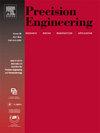基于深度学习的可调可控先验格结构设计
IF 3.7
2区 工程技术
Q2 ENGINEERING, MANUFACTURING
Precision Engineering-Journal of the International Societies for Precision Engineering and Nanotechnology
Pub Date : 2025-03-24
DOI:10.1016/j.precisioneng.2025.03.027
引用次数: 0
摘要
晶格结构由于其优异的性能在航空航天、汽车制造和生物医学工程中得到了广泛的应用。现有的点阵结构设计方法大多是后验设计。在棒材、梁材、板材、壳材等基本结构的基础上,首先构建了晶格单元,然后对晶格材料的性能进行了验证。实现适合晶格材料性能要求的设计是困难的。为解决这一问题,提出了可调可控的格结构先验设计方法。以晶格结构的预期性能目标为设计起点,通过拓扑关联不同优势性能的晶格结构来构建设计空间,从而保证了晶格结构性能的可调节性。提出了一种分层递进策略来优化设计空间,保证晶格结构性能的可控性。此外,引入人工神经网络(ANN)来学习结构与相应力学性能之间的规律。然后,通过优化算法,得到面向预期性能指标要求的点阵结构。通过上述过程,构建了可调可控的晶格结构先验设计。最后,通过算例验证了所提出的可调可控先验格结构设计方法的正确性和有效性。本文章由计算机程序翻译,如有差异,请以英文原文为准。
An adjustable and controllable a priori design of lattice structure based on deep learning
Lattice structures are widely used in aerospace, automotive manufacturing and biomedical engineering because of their excellent properties. Most of the existing design methods for lattice structures are the a posteriori design. Based on the basic structure of rods, beams, plates, shells, etc., the lattice cell is constructed first, and then the performance of the lattice materials is verified. It is difficult to realize the suitable design for the performance requirements of the lattice materials. To solve this problem, the adjustable and controllable a priori design method of lattice structures is proposed. By taking the expected performance goal of the lattice structure as the design starting point, lattice structures with different dominant performance are topologically associated to construct the design space, so that the adjustability of lattice structure performance can be ensured. A layered and progressive strategy is proposed to optimize the design space and ensure the controllability of lattice structure performance. Moreover, an Artificial Neural Network (ANN) is introduced to learn the law between the configurations and the corresponding mechanical performance. Then, through the optimization algorithm, the lattice structure is obtained oriented to the requirement of expected performance index. Through the above process, the adjustable and controllable a priori design of lattice structure is constructed. In addition, the example is given to verify the correctness and effectiveness of the adjustable and controllable a priori design method of lattice structures.
求助全文
通过发布文献求助,成功后即可免费获取论文全文。
去求助
来源期刊
CiteScore
7.40
自引率
5.60%
发文量
177
审稿时长
46 days
期刊介绍:
Precision Engineering - Journal of the International Societies for Precision Engineering and Nanotechnology is devoted to the multidisciplinary study and practice of high accuracy engineering, metrology, and manufacturing. The journal takes an integrated approach to all subjects related to research, design, manufacture, performance validation, and application of high precision machines, instruments, and components, including fundamental and applied research and development in manufacturing processes, fabrication technology, and advanced measurement science. The scope includes precision-engineered systems and supporting metrology over the full range of length scales, from atom-based nanotechnology and advanced lithographic technology to large-scale systems, including optical and radio telescopes and macrometrology.

 求助内容:
求助内容: 应助结果提醒方式:
应助结果提醒方式:


